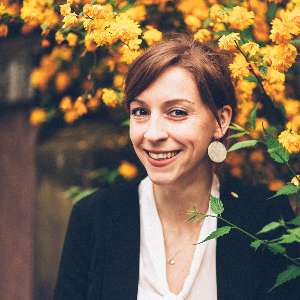Vienna undoubtedly is Austria’s cultural centre and has played as important a role as few other cities in music history. It was home and workplace for many a great composer, among them Mozart, Haydn, Beethoven, the Strauss dynasty and Mahler, and the success (or failure) of a concert of opera production is on everyone’s lips to this day.
Opening this evening in Leamington was Franz Schubert’s Quartettsatz, composed at the very end of the Classical era, intended as the first movement of his twelfth, yet never completed string quartet. Designated Allegro assai, the Brodsky Quartet's rubatos at times blurred the melody’s structure and strettas gave it a slightly hectic feel, particularly towards the end. Its fluttering opening and passionate swellings, however, were marvellously transported in the warm, meaty tone of the violin’s lower register, and made for an opener that demanded attention.
From Schubert, we turned to Anton Webern's Six Bagatelles. These shortest of studies are at most a few minutes long, but perhaps “some of the most important minutes in history”, as first violinist Daniel Rowland described, looking at tonality and the increasing departure thereof in the early 20th century. Clearly influenced by his teacher and mentor Arnold Schoenberg, these miniatures explore the manifold timbres of the quartet, which the musicians brought out beautifully. Immediately the tone was much brighter, more acute, more delicate. Pizzicato cues were perfectly precise in the con sordino movement, and the quartet upheld the tension, making things exciting and captivating despite the lack of a tonal anchor.
Arnold Schoenberg was also the connection to Alexander von Zemlinsky, who not only turned out to be Schoenberg’s only formal music teacher, but was also his close friend and, later, brother-in-law. Born and raised Jewish, Zemlinsky was eventually forced to emigrate to America, but, unlike Schoenberg, was virtually unknown in his new home. His works are marked by a post-romantic, very colourful musical language, yet some of his later works lean towards a much harder accent. This is certainly true for his Fourth String Quartet, composed as a reaction to the news of the death of Alban Berg.
Imagine one of Egon Schiele’s images come to life with their clear-cut, more hard-edged lines, simple colours and yet immense expressive power. The intense first movement tightened and resolved into a much lighter structure before the explosive outburst of energy that is the second movement, with gripping opening figures of viola and cello. The latter is particularly present in the Adagietto lament before the music develops lively, energetic, even dance-like moments in between expressive outpourings and fiercer sections of fast-changing effects and moods. Only in the finale do the echoes of Webern briefly subside and make way for a distinctly more romantic passage, bringing brief respite before the furious closing section. The Brodsky’s performance was a masterclass in high-octane playing, one that commanded admiration rather than inspired enjoyment and simply overwhelmed with insane intensity.
The musicians miraculously managed to hold on to that incredible energy throughout the interval for Schubert's quartet Death and the Maiden. In the opening movement, they conveyed both defiance and innocence in the music, before the unmistakable melody of the song of the same name transported the audience into the word of song. With varied dynamic work, the quartet brought life to and monopolised the listener with the dialogue between the two eponymous figures. In the following variation, the violin soared beautifully over the melodic base of second violin and viola, whilst Jacqueline Thomas’ cello adapted a fitting, more pallid tone at the beginning of the second variation, and the final variation impressed with great expressive and emotional impact, before the sound wafted away into the inevitable.
The resolute Scherzo that is the third movement presented a somewhat harsh break, throwing the listener out of the world of the song and back into that of the quartet genre. It also showed the quartet at its most engaging and unrestrained yet, communicating more perceptibly, the joy of playing clearly visible. Playing standing up, sound had travelled a lot better from the stage alcove into the auditorium of the Pump Rooms, packing a great deal more punch, but despite the enthralling Scherzo, the four players managed to go one better still. The final movement was characterised by a tight, dense, full sound and nuanced dynamics, but above all by their immense passion and huge emotional impact. It was not at all surprising that Rowland, taking a first bow, quickly reached out to the piano sitting in the corner for support – the Brodsky Quartet had given it their all.




